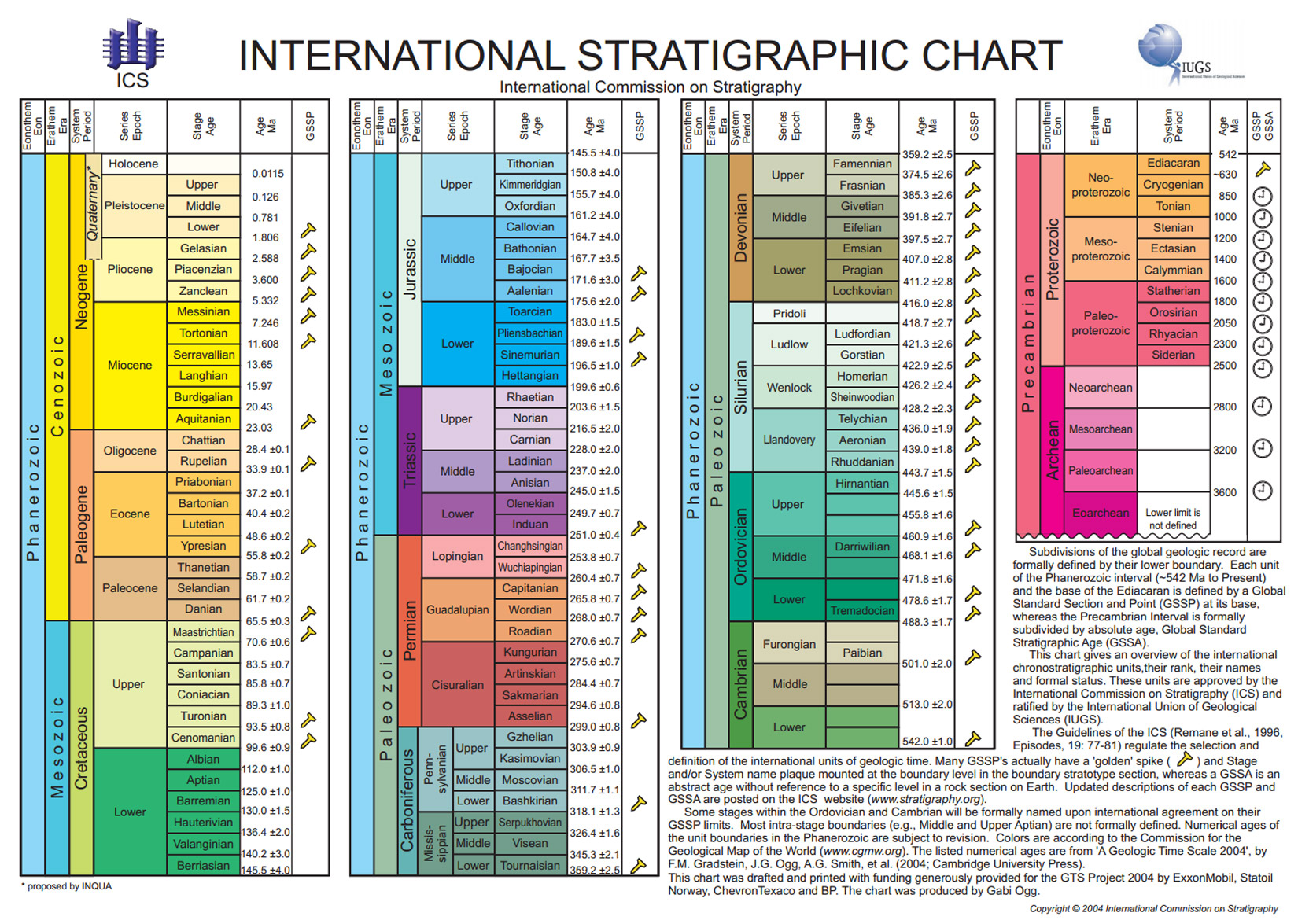The geologic time scale is the framework for deciphering the history of the Earth. A new geologic time scale has been prepared by a large number of experts working with radiogenic and stable isotopes, stratigraphers using diverse tools from traditional fossils to astronomical cycles to database programming, and geomathematicians. Contributions have also been made by the past and present subcommission officers of the ‘International Commission of Stratigraphy’ (ICS).
Since the earlier geologic time scale published by Harland et al 1990, a lot of data has become available and it had become necessary to integrate it in the new timescale. Some of the highlights of the new timescale are as follows:
- Nearly 50 of 90+ Phanerozoic stage boundaries are now defined compared with <15 in 1990.
- High-resolution cycle scaling now exists for Paleocene, mid-Cretaceous, lower Jurassic and mid-Jurassic.
- More accurate and more precise age dating exists with over 200 Ar/Ar and U/Pb dates that incorporate external error analysis (note only a fraction of those dates were available to GTS89).
- Improved mathematical/statistical techniques combine zones, polarity chrons, stages and ages to calculate the best possible time scale, with estimates of uncertainty on stage boundaries and durations.
The large amount of time and effort spent by the authors on firming up this time scale is appreciated. It is hoped that the new geologic time scale will benefit geoscientists as they adopt it.
More details on the new time scale can be found at www.stratigraphy.org.












Join the Conversation
Interested in starting, or contributing to a conversation about an article or issue of the RECORDER? Join our CSEG LinkedIn Group.
Share This Article